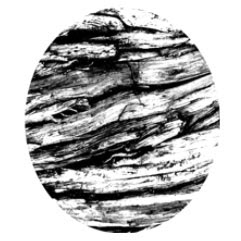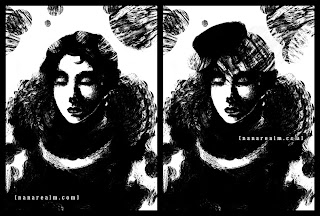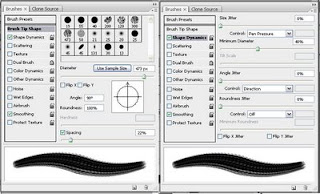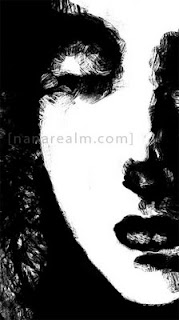
Photoshop's feature for creating custom brushes is a very powerful tool, but I still don't know how to fully utilise it. I created this wood grain brush as something to play around with and ended up using it in a somewhat unconventional way.
This picture was created exclusively using the wood grain brush and a simple palette of black and white.

Usually I use brushes which have the 'Other Dynamics' box ticked in the brush settings, which allows some opacity variation for blending. However, I noticed that it damped the texture effect of the brush so I decided to leave it unticked. As a result every dab of the brush gives full opacity, i.e. black or white.
These were the settings I used for the brush. The only thing I varied as I got going was the Master Diameter, and occasionally the Spacing.

The main features of this brush is no opacity jitter and wide spacing, which makes sure that the texture comes through. It's also slightly oval, which gives some direction in the stroke. For example, the lace of her collar was done in a single stroke. Makes it seem simple doesn't it?
The time-consuming part was the face, since you can't be too rough while still making it look like a face.
Instead of using the brush in a conventional manner, I used it more like a sponge, creating shades by dabbing blacks and whites. By varying the brush size, the density of the 'holes' in the dab would change and I could thus lay down different tones. Then I would chip away with dabs of the opposite colour to refine the shape.

It may seem like a somewhat convoluted method, and sometimes it was quite difficult to get the right, but the end result was interesting enough to make it worthwhile.






